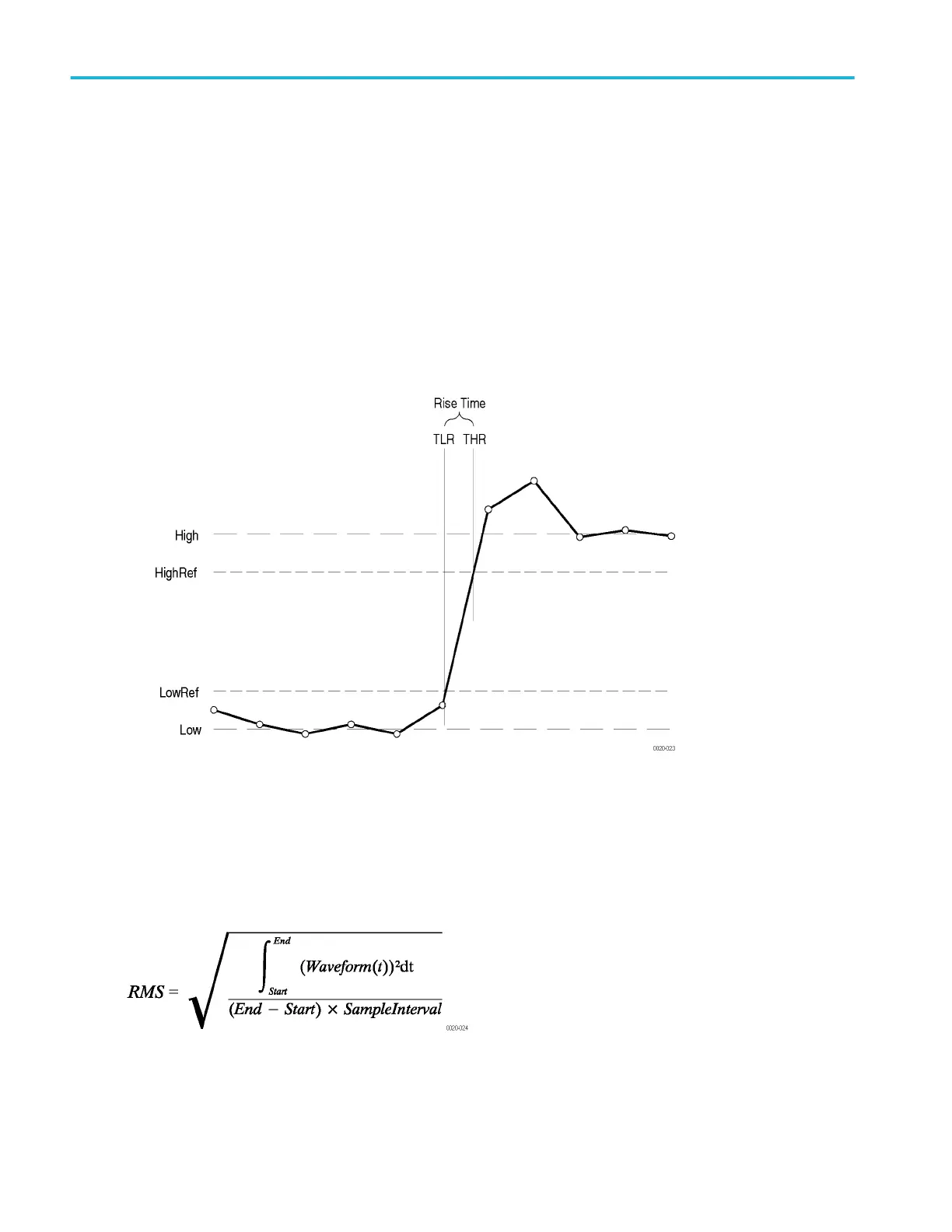Rise time. Timing measurement. Time taken for the leading edge of a pulse to rise from a LowRef value (default = 10%) to a
HighRef value (default = 90%).
The following figure shows a rising edge with the two crossings necessary to calculate a Rise Time measurement.
1. Searching from Start to End, find the first sample in the measurement zone less than LowRef.
2. From this sample, continue the search to find the first (positive) crossing of LowRef. The time of this crossing is the low rise
time or TLR. (Use linear interpolation if necessary.)
3. From TLR, continue the search, looking for a crossing of HighRef. Update TLR if subsequent LowRef crossings are found. If
a HighRef crossing is found, it becomes the high rise time or THR. (Use linear interpolation if necessary.)
4. RiseTime = THR – TLR
Figure 23: Rise Time
RMS. Amplitude (voltage) measurement. The true Root Mean Square voltage.
If Start = End then RMS = the (interpolated) value at Waveform[Start].
Otherwise,
For details of the integration algorithm, see below.
Oscilloscope reference
696 DPO70000SX, MSO/DPO70000DX, MSO/DPO70000C, DPO7000C, and MSO/DPO5000B Series

